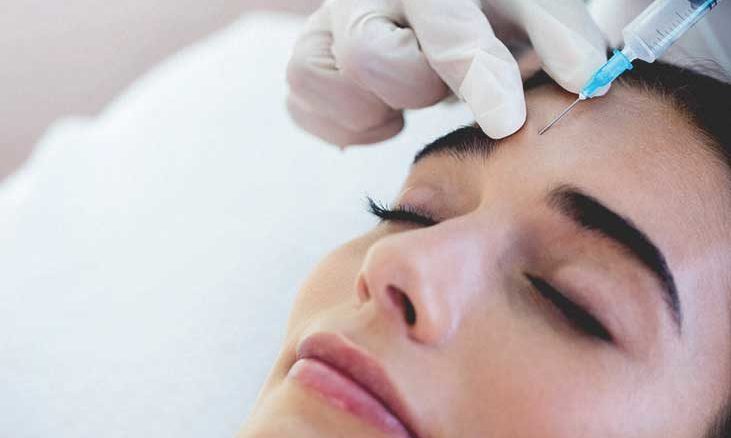Botox Is More Popular Than Ever. Here’s What You Should Know Before You Get It.-
From its cost to what it actually feels like, we’ve answered some of the procedure’s most common questions.
The following written content by Adam Hurly
With each passing year, more and more people are injecting Botox beneath their skin. The American Society of Plastic Surgeons now ranks the injections as the most popular minimally invasive cosmetic procedure in the country, with 4.4 million sessions booked in 2020 alone.

And given how much time many of us have spent staring at our own faces on Zoom over the past two years, that’s not a surprise. A number of things contribute to those expression lines across the forehead and at the corners of our eyes. Layer a lifetime of movement and expression over the skin’s natural decrease in collagen and oil production, as well as decreased fat levels in the deep layers of skin tissue, and some wrinkling is inevitable. But if you’ve spent a lot of time in the sun or been exposed to the kinds of environmental toxins that compromise the skin, and the lines may become permanent.
So whether you’re 25 and considering prevention, or 45 and interested in shaving a decade off your brow, you may have wondered whether Botox is worth it. For the uninitiated, there is a trove of questions to ask: How exactly does Botox work, how long does it last and what will regular injections do in the long run? Sure, we’ve all had a laugh at someone who can’t move his or her forehead, but will that person get the last laugh at age 75, when they look 20 years younger than the rest of us?
If you’re on the fence, or if you’d simply like some general Botox 101, then furrow your brow no more: Here’s a primer on Botox from one of the most trusted docs in the business: John Layke, D.O., plastic surgeon and co-founder of Beverly Hills MD.
What Does Botox Actually Do?
The end goal of Botox is to disappear or prevent wrinkles and fine lines. But how exactly does it accomplish that goal? “Simply, Botox blocks acetylcholine receptors from the nerves,” says Layke. In other words: Botox prevents your facial muscles from moving, and thus, from folding and wrinkling the skin. And as a bonus for oily skin types, it can also reduce sweat or oil production in these areas. However, for many patients, and primarily men, the goal might not be to totally inhibit muscle movement
Who Botox Is For, and Where Does It Go?
Most people are good candidates, notes Layke. On the one side, there are people looking to prevent the formation of these fine lines (people in their 20s), while anyone in their 30s upwards would be in the other camp, trying to offset existing lines and prevent further progression. Layke says the assessment is made based on “visual age” however, since two people at the same age may experience wrinkle formation and progression differently, for a variety of reasons.
While Botox has uses beyond wrinkle prevention (like preventing profuse sweating in the armpits), its cosmetic use targets four spots around the face: The crow’s feet at the eyes, the glabella (between and right above the eyebrows), the bunny lines (around the nose), as well as the forehead.
Who Shouldn’t Get Botox?
Certain muscular and nervous conditions preclude Botox, Layke says, such as MS and ALS. He also advises against Botox use on anyone whose brow is “too heavy … Many times, Botox can worsen this, and a brow lift and/or eyelid surgery will be the better solution,” Layke says.
How Long Does Botox Last?
Layke says you should enjoy the full benefits of each dosage for three to four months. After that, your facial muscles will slowly regain mobility. It will take a few days for the Botox to begin working, after which it will peak at one week. Read more from Robb Report.





